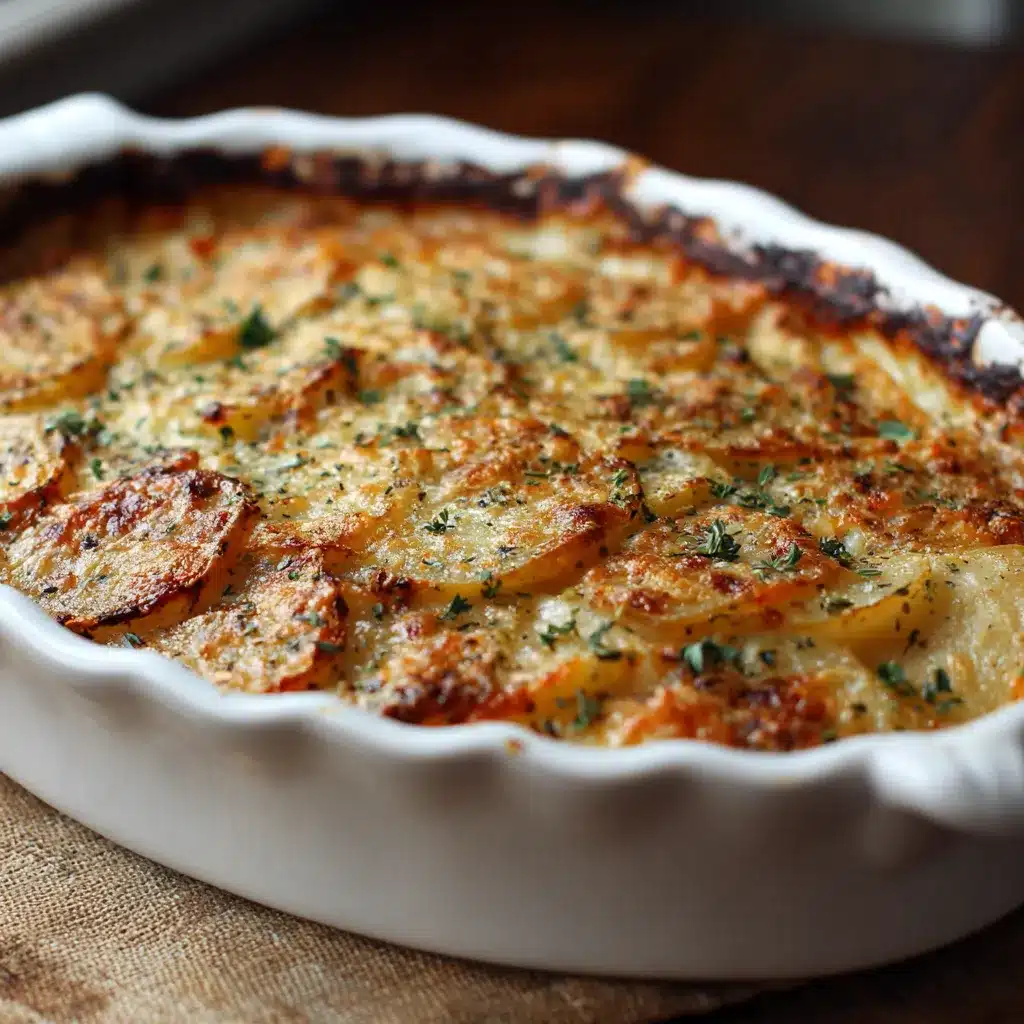Have you ever wondered why scalloped potatoes have remained a timeless comfort food favorite despite countless culinary trends? This creamy, cheesy dish has been a staple across generations, and for good reason. Scalloped potatoes combine tender, thinly sliced spuds with a luscious sauce that melts in your mouth, offering unmatched comfort in every bite.

But what exactly makes the best scalloped potatoes recipe? Whether you’re a novice cook or a seasoned chef, this guide will show you seven of the best ways to prepare irresistibly creamy scalloped potatoes that bring warmth and satisfaction to your table.
Ingredients List
To craft the ultimate scalloped potatoes, you’ll need a combination of fresh ingredients balanced with flavorful add-ons to suit your taste:
- 4 large russet potatoes (about 2 pounds), peeled and thinly sliced
- 2 cups whole milk or heavy cream for extra richness (substitute with almond milk or oat milk for a dairy-free version)
- 3 tablespoons unsalted butter (or olive oil for a plant-based version)
- 3 tablespoons all-purpose flour (gluten-free flour can work well here)
- 1 medium onion, finely chopped
- 2 cloves garlic, minced
- 1 ½ cups shredded sharp cheddar cheese (can substitute with Gruyère, mozzarella, or vegan cheese)
- 1 teaspoon salt
- ½ teaspoon black pepper
- ½ teaspoon paprika (optional, adds a subtle smoky note)
- Fresh thyme or rosemary for garnish (optional)
This ingredient list offers a perfect sensory experience, creamy, cheesy, and subtly herby creaminess that melts over soft potatoes.
Timing
Preparing scalloped potatoes typically takes around 90 minutes. This includes 15 minutes of prep time and approximately 75 minutes of baking. Compared to many casseroles that can take over two hours to prepare, this recipe saves you about 25 to 30 minutes while delivering an excellent creamy texture and flavor. To speed things up, some variations allow for partial microwave preparation or thinner slicing, reducing the overall time by 20%.
Step-by-Step Instructions
Step 1: Prepare the Potatoes and Sauce
Start by preheating your oven to 350°F (175°C). Wash, peel, and thinly slice your potatoes to an even thickness ideally about 1/8 inch to ensure uniform cooking. In a medium saucepan, melt the butter over medium heat, then add the chopped onions and sauté until they are translucent. Stir in the minced garlic for about 1 minute.
Step 2: Make the Creamy Roux
Sprinkle the flour into the butter and onion mixture; whisk constantly for 2 minutes until it forms a smooth paste. Slowly add in the milk or cream, whisking continuously to prevent lumps. Cook until the sauce thickens, about 5 minutes. Stir in half of the cheese, continuing to whisk until it is melted. Season with salt, pepper, and paprika if using.
Step 3: Layer the Potatoes
Lightly grease a baking dish and arrange a layer of potato slices on the bottom. Pour a portion of your cheese sauce over the potatoes to cover evenly. Repeat the layering process until all the potatoes and sauce are used, finishing with a layer of sauce on top.
Step 4: Bake to Perfection
Cover the baking dish loosely with aluminum foil and bake for 45 minutes. Remove the foil, sprinkle the remaining cheese on top, and bake uncovered for an additional 25 to 30 minutes until the top is golden brown and the potatoes are tender when pierced with a fork.
Step 5: Garnish and Serve
Allow the scalloped potatoes to rest for 10 minutes before serving. This helps the sauce thicken and the flavors meld beautifully. Garnish with fresh thyme or rosemary for an aromatic boost.
Nutritional Information
A typical serving of classic scalloped potatoes (about 1 cup) contains roughly 300-350 calories, 15-20 grams of fat, and 30-35 grams of carbohydrates, including around 3 grams of protein. The dish is rich in calcium and vitamin C, thanks to the cheese and potatoes. However, it can be moderately high in saturated fats and sodium, so moderation is key. Using reduced-fat milk or plant-based alternatives can cut calories and saturated fat by up to 30%.
Healthier Alternatives for the Recipe
For those mindful of nutritional content but craving comfort food, consider these tweaks:
- Swap whole milk and butter for unsweetened almond milk and olive oil to reduce saturated fat.
- Use cauliflower or parsnip slices mixed with or instead of potatoes to add fiber and reduce carbs.
- Choose low-fat cheese or a smaller quantity to cut calories without sacrificing too much flavor.
- Experiment with herbs like thyme, rosemary, or chives to add flavor without the need for additional salt.
Serving Suggestions
Scalloped potatoes can be a versatile side or main dish. Pair them with roasted chicken or grilled vegetables for a hearty meal. For a festive touch, serve alongside glazed ham or a fresh green salad with vinaigrette to balance richness. Leftovers make superb breakfast hashes or can be transformed into potato cakes with a crispy crust.
Common Mistakes to Avoid
- Slicing potatoes unevenly can cause some pieces to overcook while others remain undercooked. Use a mandoline slicer for uniform slices.
- Skipping the roux step results in runny sauce. Always let your flour and butter cook together before adding milk.
- Overbaking will turn potatoes gummy or dry. Check tenderness after 60 minutes and cover with foil if the tops brown too early.
- Not resting the dish before serving this helps the sauce set and improves texture and flavor.
Storing Tips for the Recipe
Store leftovers in an airtight container in the refrigerator for up to 3 days. To reheat, cover the dish with foil and bake at 350°F for 20-25 minutes or microwave individual servings. For advance prep, slice potatoes and prepare the cheese sauce up to a day ahead, layering just before baking.
Conclusion
Scalloped potatoes are a quintessential comfort food that adapts well to many tastes and dietary preferences. With these seven expert methods, you can create creamy, flavorful scalloped potatoes that satisfy cravings and impress family or guests alike. Ready to try these recipes yourself? Dive in, experiment with ingredients, and don’t forget to share your results and favorite variations with us!
FAQs
Q: Can I prepare scalloped potatoes ahead of time?
A: Yes! Assemble the potato layers and sauce in the baking dish, cover tightly, and refrigerate for up to 24 hours before baking.
Q: What’s the difference between scalloped potatoes and au gratin potatoes?
A: Scalloped potatoes typically use a white sauce (béchamel) without cheese, whereas au gratin potatoes include cheese both in the sauce and on top for a crispy crust.
Q: Can I make scalloped potatoes dairy-free?
A: Absolutely! Use plant-based milk and vegan butter substitutes, along with dairy-free cheese alternatives, for a creamy, allergy-friendly dish.
Q: How thin should I slice potatoes for scalloped potatoes?
A: Aim for 1/8 inch thickness to ensure even cooking and a tender texture.
Q: How do I make scalloped potatoes less salty?
A: Use low-sodium broth or cheese, limit added salt, and enhance flavor with fresh herbs and garlic.


Leave a Reply